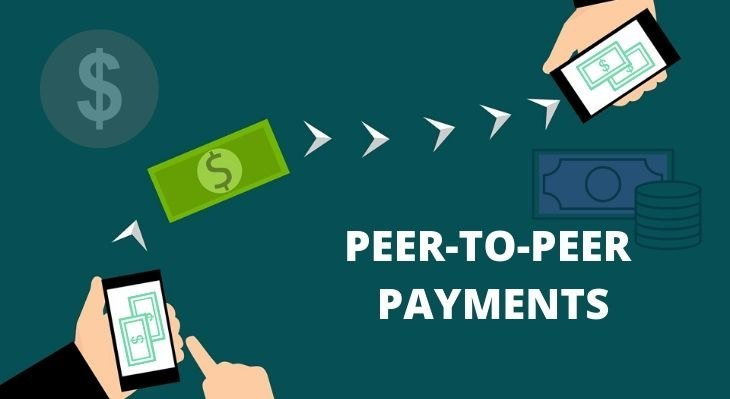Introduction
In recent years, peer-to-peer payments have become increasingly popular. But what are they, exactly? Put, peer-to-peer (P2P) payments allow users to transfer money between each other without the need for a financial institution or third party. This payment is completed almost instantaneously and can be done with a button on an app or website. In this article, we'll take a look at what P2P payments are and how they work.
What Are Peer-to-Peer Payments?
Do you know: what are peer to peer payments? Peer-to-peer payments are transactions between two individuals without a third-party or financial institution involved. P2P payments can be made via wire transfers, money orders, and digital apps. One of the most popular forms of peer-to-peer payments is through mobile applications such as Venmo, PayPal, Zelle, and CashApp. These applications allow users to quickly transfer money to family and friends without manually entering bank information or waiting for lengthy processing times.

The Types Of Peer-To-Peer Payments
Peer-to-peer payments can be divided into two categories: traditional methods and digital applications.
- Traditional Methods
With traditional methods, the sender and receiver of money must manually enter their bank information into an online form or use a physical form like a check or money order. This payment could be faster, and it can take several days for the funds to be transferred. Additionally, there are usually fees associated with traditional P2P costs that are taken out of the total amount sent.
- Digital Applications
Digital applications make it much easier to complete peer to peer payments. These apps allow users to link their debit card or bank account and quickly transfer funds without extra steps. This payment type is also much faster than traditional methods, as most transfers take seconds to process. Furthermore, digital applications typically do not charge additional fees for using them, making them one of the most cost-effective forms of P2P payments.
The Benefits Of Peer-To-Peer Payments
There are several advantages to using peer-to-peer payments over traditional methods. The primary benefit of P2P costs is convenience. With the rise of digital payment platforms, it's easier than ever before to send someone money–all you need is their phone number or email address. This makes it easy to split the check at a restaurant or send money for rent.
Additionally, P2P payments are often free or come with very minimal fees compared to traditional forms of payment such as wire transfers or checks. Another benefit of P2P costs is that they give users more control over their finances. Unlike conventional banking methods, users can set limits and restrictions on the type of transactions and how much money can be sent. This helps protect users from fraudulent activities and keep their finances secure.
Additionally, many P2P payments do not incur additional fees, which can be very beneficial when transferring large amounts of money. Finally, peer-to-peer payments offer increased security by allowing users to set up two-factor authentication and other security measures.
Finally, peer-to-peer payments are also beneficial because they are fast and secure. With P2P costs, there is no need to wait for money orders or wire transfers to clear–the funds can usually be transferred in just a few seconds. Additionally, most platforms have built-in security measures such as two-factor authentication and encryption, which help protect users from fraud.
How Do Peer-To-Peer Payments Work?
Peer-to-peer payments typically involve using a mobile app or website to send and receive money. Most apps require users to register an account with their email addresses and bank information to use the service. Once registered, users can search for contacts in their address book, enter payment details, and then type in the amount they wish to transfer. After a few clicks, the funds will be transferred almost instantaneously. The recipient will also receive a notification that the payment has been made. Finally, both parties will receive a confirmation email to verify that the transaction was successful.

Conclusion
Peer-to-peer payments are becoming increasingly popular due to their convenience, speed, and security. These payments allow users to quickly and easily transfer money without worrying about lengthy processing times or fraud protection. In addition, most P2P payment platforms are free or have very minimal fees compared to traditional banking methods.
With peer-to-peer payments, transferring funds has never been easier! If you're looking for an efficient way to send money, you may need peer-to-peer payments. From quick transfers between friends and family members to paying rent or splitting the check at a restaurant–peer-to-peer payments make it easy to manage your finances. Start sending money today!

View Authorized User Purchases

The Basics: What Is a Stock’s Beta?

Charles Schwab vs. E*TRADE: A Comprehensive 2024 Showdown

A Brief Guide: What Are Peer-to-Peer Payments?

Understanding Sales Tax on Used Cars: What Buyers Need to Understand

How an Auto Loan Grace Period Can Save You From Late Fees?

All About the Cheap Car Insurance in New Jersey

Navigating AppleCare: Your Passport to Device Security and Peace of Mind

Getting a Bank Account as an Undocumented Immigrant: What You Need to Know

Comparing Citi Custom Cash vs. Chase Freedom Flex: Which Credit Card Is Right for You?

How to Request a Quote From a Car Dealer: All You Need to Know
